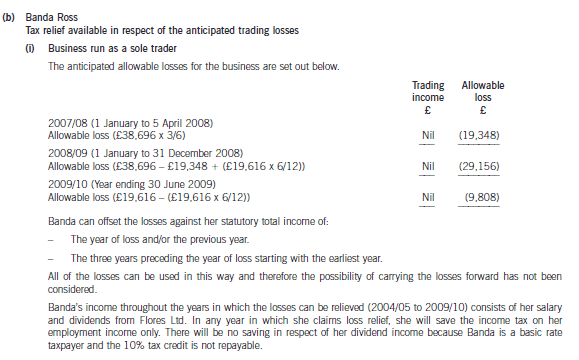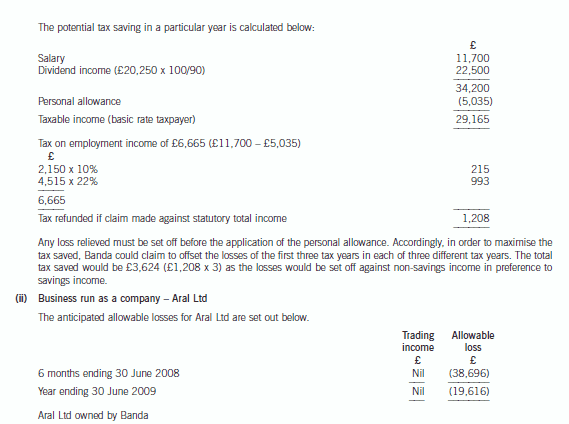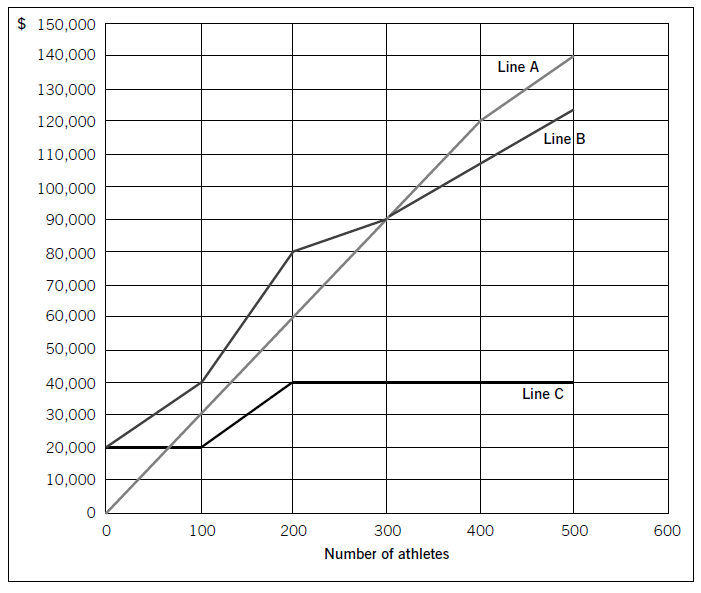2020年ACCA考试会计师与企业财经词汇汇编(11)
发布时间:2020-10-10
今日51题库考试学习网为大家带来2020年ACCA考试会计师与企业财经词汇汇编(11)的相关知识点,各位辛勤备考的小伙伴一起来看看吧。
ACCA财经词汇汇编:Market
Outperform
【English Terms】
Market Outperform
【中文翻译】
表现超越大市
【详情解释/例子】
研究分析员建议的一种,指一种股票的表现预期会稍微超越大市。
ACCA财经词汇汇编:股市投资比率
【English Terms】
Market Exposure
【中文翻译】
股市投资比率
【详情解释/例子】
一名人士或共同基金在股票市场的投资额,一般以百分比计算。
ACCA财经词汇汇编:Market
Order
【English Terms】
Market Order
【中文翻译】
市价订单
【中文翻译】
指示立即以当时最佳市价买卖股票的指令,市价订单保证获得执行。
ACCA财经词汇汇编:Market Risk
Premium
【English Terms】
Market Risk Premium
【中文翻译】
市场风险溢价
【详情解释/例子】
一个投资组合的预期回报率与无风险率之间的差额。
ACCA财经词汇汇编:Market
Segmentation
【English Terms】
Market Segmentation
【中文翻译】
市场细分
【详情解释/例子】
市场学用词,指将需要相似,可能会接受同类促销手段的潜在客户集合成为不同组别。
ACCA财经词汇汇编:Market Risk
【English Terms】
Market Risk
【中文翻译】
市场风险
【详情解释/例子】
投资者经常面对,由证券价格波动而引起损失的机会。
ACCA财经词汇汇编:Market
Value Added
【English Terms】
Market Value Added(MVA)
【中文翻译】
市场增值
【详情解释/例子】
一家公司的市场价值(股本及债务)以及投资者投入资金之间的差额。
ACCA财经词汇汇编:Management
Buying(MBI)
【English Terms】
Management Buying(MBI)
【中文翻译】
保留管理层的收购项目
【详情解释/例子】
一组公司外部投资者买入公司的控股股权,并维持现有的管理层。
ACCA财经词汇汇编:Majority
Shareholder
【English Terms】
Majority Shareholder
【中文翻译】
多数股东
【详情解释/例子】
拥有一家企业50%以上已发行股份的人士或集团。
ACCA财经词汇汇编:Mail
transfer rate
【English Terms】
Mail transfer rate
【中文翻译】
信汇汇率
【详情解释/例子】
信汇汇率(mail transfer rate,M/T Rate)也称信汇价,是银行用信函方式通知给付外汇的汇率。即用信函方式通知付款的外汇汇率。由于航邮比电报或电传通知需要时间长,银行在一定时间内可以占用顾客的资金,因此信汇汇率较电汇汇率低。
以上就是51题库考试学习网带给大家的全部内容,相信小伙伴们都了解清楚。预祝12月份ACCA考试取得满意的成绩,如果想要了解更多关于ACCA考试的资讯,敬请关注51题库考试学习网!
下面小编为大家准备了 ACCA考试 的相关考题,供大家学习参考。
(c) Critically discuss the likely effectiveness of standard questionnaires sent to other auditors as a means of
obtaining information required. (5 marks)
(c) Likely effectiveness of standard questionnaires
Most group auditors obtain information from other auditors through questionnaires in the form. of yes/no requests and/or
detailed questions.
Standard yes/no questionnaires are widely used because, for example, they:
■ can be completed more quickly by someone already familiar with their form. and content;
■ facilitate summarisation of responses from other auditors by the group auditor.
However, a standard questionnaire may be less effective than a ‘bespoke’ one in that it is likely to ask unnecessary questions.
This may result in the other auditor finding the questions to be ‘not applicable’ and regarding completion of the questionnaire
as a form-filling exercise, rather than providing the group auditor with essential information.
Nevertheless, there is a danger that questionnaires that are not based on some standard form. may overlook or otherwise omit
some significant issues and therefore fail to alert the group auditor to a potential risk area.
Thus a balance needs to be struck between requesting enough information for the group auditor to form. their own view
without requesting meaningless ‘box-ticking’ questions that do not deal with the issues. Questionnaires that get longer and
longer are likely to lose their effectiveness especially if they are to be used in different locations/jurisdictions.
Questionnaires will cover a broad range of topics such as qualifications, competence/experience, compliance with ISAs (and
ISQC 1), audit findings, subsequent events, etc. Therefore there will be a tendency to length (completeness) rather than
quality (relevance).
In conclusion, questionnaires should:
■ avoid over-use of yes/no questions which may encourage laxity;
■ not ask for information that has already been provided or which is unnecessary; and
■ be adequately tailored.
(b) The tax relief available in respect of the anticipated trading losses, together with supporting calculations and
a recommended structure for the business. (16 marks)


Aral Ltd owned by Banda
The losses would have to be carried forward and deducted from the trading profits of the year ending 30 June 2010.
Aral Ltd cannot offset the loss in the current period or carry it back as it has no other income or gains.
Aral Ltd owned by Flores Ltd
The two companies will form. a group relief group if Flores Ltd owns at least 75% of the ordinary share capital of Aral
Ltd. The trading losses could be surrendered to Flores Ltd in the year ending 30 June 2008 and the year ending
30 June 2009. The total tax saved would be £11,079 ((£38,696 + £19,616) x 19%)
Recommended structure
The Aral business should be established in a company owned by Flores Ltd.
This will maximise the relief available in respect of the trading losses and enable relief to be obtained in the period in
which the losses are incurred.
Tutorial note
The whole of the loss for the period ending 30 June 2008 can be surrendered to Flores Ltd as it is less than that
company’s profit for the corresponding period, i.e. £60,000 (£120,000 x 6/12).
Swim Co offers training courses to athletes and has prepared the following breakeven chart:

Required:
(a) State the breakeven sales revenue for Swim Co and estimate, to the nearest $10,000, the company’s profit if 500 athletes attend a training course. (2 marks)
(b) Using the chart above, explain the cost and revenue structure of the company. (8 marks)
(a)ThebreakevensalesrevenueforSwimCois$90,000.Thecompany’sprofit,tothenearest$10,000,if500athletesattendthecourseis$20,000($140,000–$120,000).(Fromthegraph,itisclearthatthepreciseamountwillbenearer$17,000,i.e.$140,000–approximately$123,000.)(b)CoststructureFromthechart,itisclearthatLineCrepresentsfixedcosts,LineBrepresentstotalcostsandLineArepresentstotalrevenue.LineCshowsthatinitially,fixedcostsare$20,000evenifnoathletesattendthecourse.Thisleveloffixedcostsremainsthesameif100athletesattendbutoncethenumberofattendeesincreasesabovethislevel,fixedcostsincreaseto$40,000.LineBrepresentstotalcosts.If100athletesattend,totalcostsare$40,000($400perathlete).Since$20,000ofthisrelatestofixedcosts,thevariablecostperathletemustbe$200.Whenfixedcostsstepupbeyondthispointatthelevelof200athletes,totalcostsobviouslyincreaseaswellandLineBconsequentlygetsmuchsteeper.However,sincetherearenow200athletestoabsorbthefixedcosts,thecostperathleteremainsthesameat$400perathlete($80,000/200),eventhoughfixedcostshavedoubled.If300athletesattendthecourse,totalcostperathletebecomes$300each($90,000/300).Sincefixedcostsaccountfor$40,000ofthistotalcost,variablecoststotal$50,000,i.e.$166·67perathlete.So,economiesofscaleariseatthislevel,asdemonstratedbythefactthatLineBbecomesflatter.At400athletes,thegradientofthetotalcostslineisunchangedfrom300athleteswhichindicatesthatthevariablecostshaveremainedthesame.Thereisnofurtherchangeat500athletes;fixedandvariablecostsremainsteady.RevenuestructureAsregardstherevenuestructure,itcanbeseenfromLineAthatfor100–400athletesthepriceremainsthesameat$300perathlete.However,if500athletesattend,thepricehasbeenreducedasthetotalrevenuelinebecomesflatter.$140,000/500meansthatthepricehasgonedownto$280perathlete.Thiswasobviouslynecessarytoincreasethenumberofattendeesandatthispoint,profitismaximised.1
3 Moffat Ltd, which commenced trading on 1 December 2002, supplies and fits tyres and exhaust pipes and services
motor vehicles at thirty locations. The directors and middle management are based at the Head Office of Moffat Ltd.
Each location has a manager who is responsible for day-to-day operations and is supported by an administrative
assistant. All other staff at each location are involved in fitting and servicing operations.
The directors of Moffat Ltd are currently preparing a financial evaluation of an investment of £2 million in a new IT
system for submission to its bank. They are concerned that sub-optimal decisions are being made because the current
system does not provide appropriate information throughout the organisation. They are also aware that not all of the
benefits from the proposed investment will be quantitative in nature.
Required:
(a) Explain the characteristics of THREE types of information required to assist in decision-making at different
levels of management and on differing timescales within Moffat Ltd, providing TWO examples of information
that would be appropriate to each level. (10 marks)
(a) The management of an organisation need to exercise control at different levels within an organisation. These levels are often
categorised as being strategic, tactical and operational. The information required by management at these levels varies in
nature and content.
Strategic information
Strategic information is required by the management of an organisation in order to enable management to take a longer term
view of the business and assess how the business may perform. during that period. The length of this longer term view will
vary from one organisation to another, being very much dependent upon the nature of the business and the ability of those
responsible for strategic direction to be able to scan the planning horizon. Strategic information tends to be holistic and
summary in nature and would be used by management when, for example, undertaking SWOT analysis. In Moffat Ltd
strategic information might relate to the development of new services such as the provision of a home-based vehicle recovery
service or the provision of twenty-four hour servicing. Other examples would relate to the threats posed by Moffat Ltd’s
competitors or assessing the potential acquisition of a tyre manufacturer in order to enhance customer value via improved
efficiency and lower costs.
Tactical information
Tactical information is required in order to facilitate management planning and control for shorter time periods than strategic
information. Such information relates to the tactics that management adopt in order to achieve a specific course of action. In
Moffat Ltd this might involve the consideration of whether to open an additional outlet in another part of the country or
whether to employ additional supervisors at each outlet in order to improve the quality of service provision to its customers.
Operational information
Operational information relates to a very short time scale and is often used to determine immediate actions by those
responsible for day-to-day management. In Moffat Ltd, the manager at each location within Moffat Ltd would require
information relating to the level of customer sales, the number of vehicles serviced and the number of complaints received
during a week. Operational information might be used within Moffat Ltd in order to determine whether staff are required to
work overtime due to an unanticipated increase in demand, or whether operatives require further training due to excessive
time being spent on servicing certain types of vehicle.
声明:本文内容由互联网用户自发贡献自行上传,本网站不拥有所有权,未作人工编辑处理,也不承担相关法律责任。如果您发现有涉嫌版权的内容,欢迎发送邮件至:contact@51tk.com 进行举报,并提供相关证据,工作人员会在5个工作日内联系你,一经查实,本站将立刻删除涉嫌侵权内容。
- 2021-05-29
- 2021-05-29
- 2020-10-10
- 2020-09-04
- 2020-08-15
- 2021-05-29
- 2021-05-29
- 2020-10-10
- 2019-03-09
- 2020-10-10
- 2020-10-21
- 2021-05-29
- 2021-05-29
- 2019-01-04
- 2020-09-04
- 2021-05-30
- 2020-10-10
- 2021-02-21
- 2020-10-10
- 2020-09-05
- 2021-02-13
- 2021-05-29
- 2021-02-13
- 2020-08-15
- 2020-09-04
- 2021-02-13
- 2020-09-04
- 2020-08-15
- 2021-02-13
- 2020-10-21